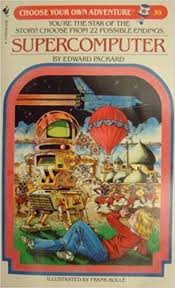Choosing Adventures
Listen to the Recess! Clip
| Author | Kenneth Kidd |
| Air Date | 7/18/2001 |

Choosing Adventures Transcript
Imagine this: You”re kidnapped by pirates and taken out to sea. The waters are rough and full of dangerous creatures, but you must escape. Otherwise you’re toast. You could get into a raft, but it’s risky. On the other hand, so is staying onboard. Should you brave the waves and sharks? Or should you wait for a safer means of escape? And if the pirates prepare the plank before you bail, what next?
Such a scenario is typical of the Choose Your Own Adventure series books. Published by Bantam Books since 1979, the series has sold over 40 million copies, in over 23 countries. These books, which set the precedent for what’s now called interactive fiction, give young readers a series of choices to make and thus control over the reading experience. There are multiple possibilities at every stage, leading to different endings.
Choose Your Own Adventure Books were developed in 1975 by Edward Packard, an attorney who tired of reading the same stories to his children night after night. Packard began to encourage his children to determine the protagonist’s next step, and his strategy soon found its way to the printed page. “If I were a better storyteller,” he once remarked, “I wouldn’t have come up with the idea.” His first book was called Sugarcane Island, and was published by the small press Vermont Crossroads. The book sold more than 8,000 copies, and before long, the series was picked up by Bantam.
Nearly all publishers of juvenile fiction have since established their own interactive fiction series, such as Apple Fiction’s “Twistaplot” books, for which R. L. Stine wrote before beginning his own Goosebumps titles. Interactive books belong to genres as diverse as horror, science fiction, mystery, sports fiction — even historical fiction, odd as that seems. Initially written for boys, they are now popular with girls as well.
The value of such fiction is hotly debated. Choose your Own Adventure books have been praised as “a boon for reluctant readers” and damned as “intellectual junk food no better than video games.” Whatever their shortcomings, these books, which feature up to 40 different endings, attract reluctant readers and help them practice decision-making skills. They may even encourage kids to write their own stories.
Of late, interactive stories have gone high-tech and multi-media. Sony Data Discamn has adapted the Choose Your Own Adventure Series for CD-ROM, and various websites offer interactive reading adventures. Also on the scene are Internet-based multi-authored novels, such as The Neverbeginning Story. Interactive fiction, it seems, is easier than ever to explore — if, that is, you choose to do so.
SHARE
Share this content on these platforms.